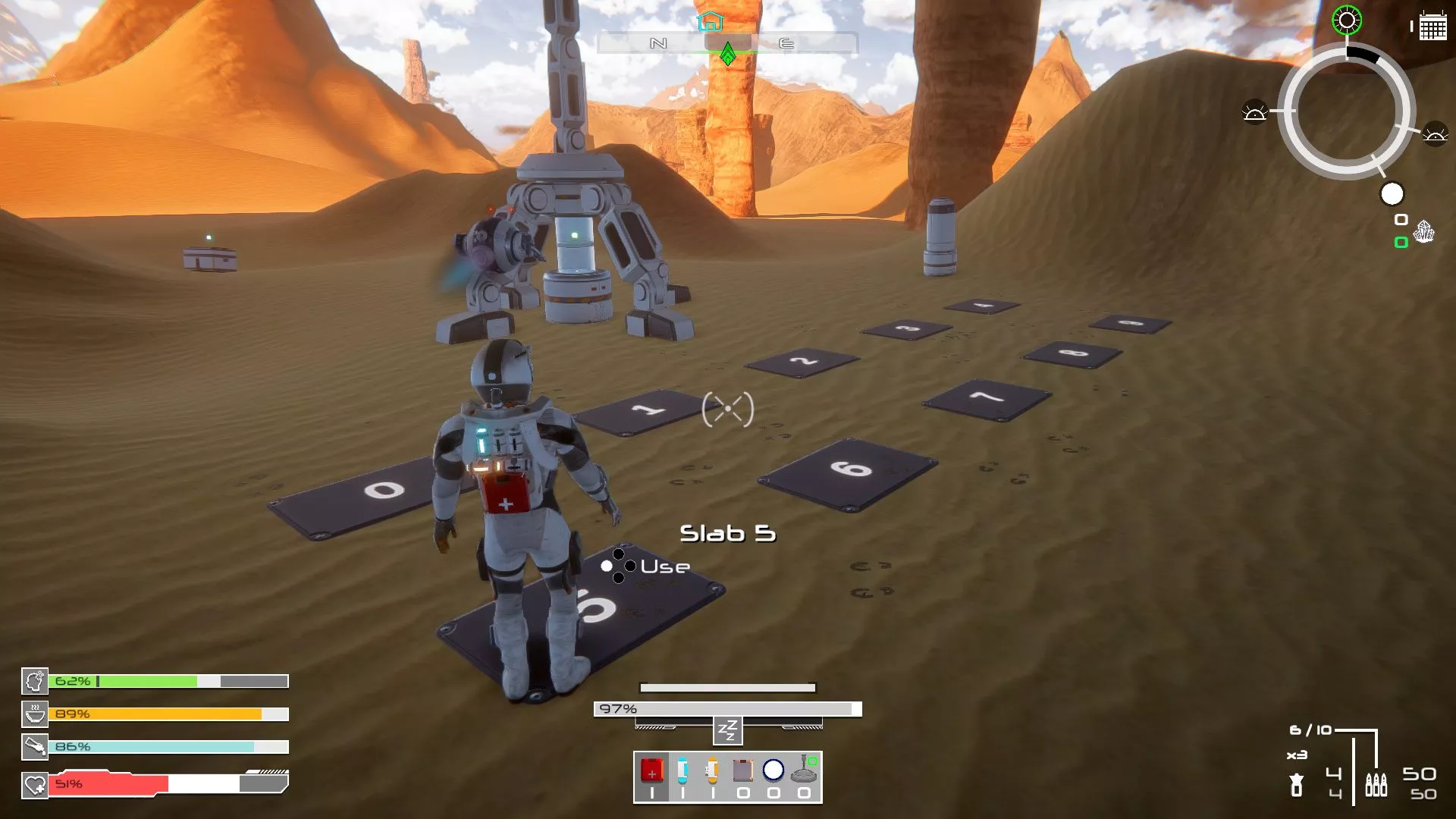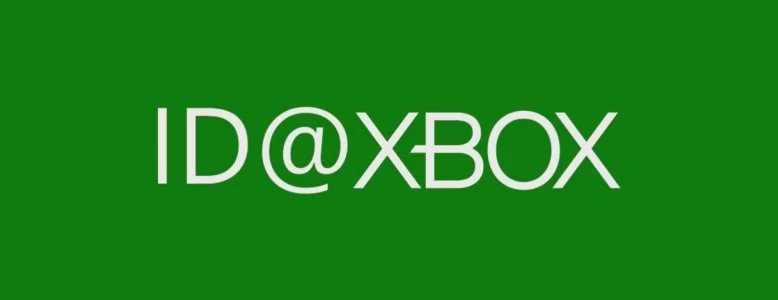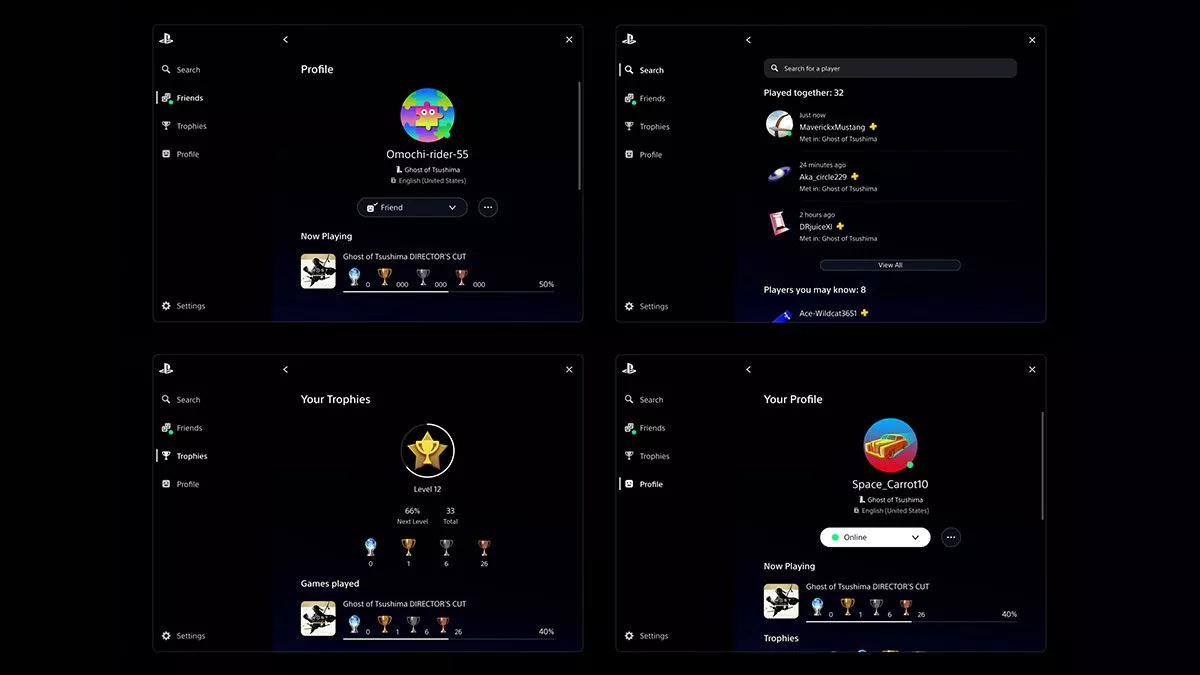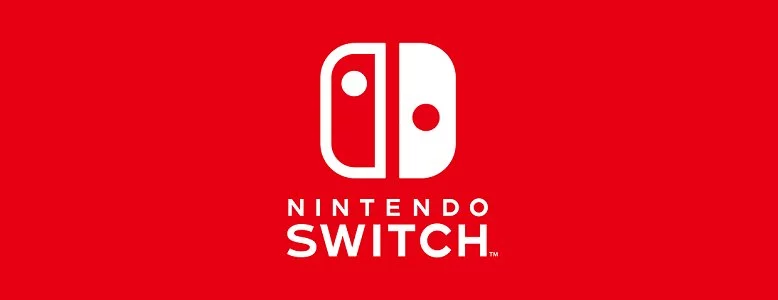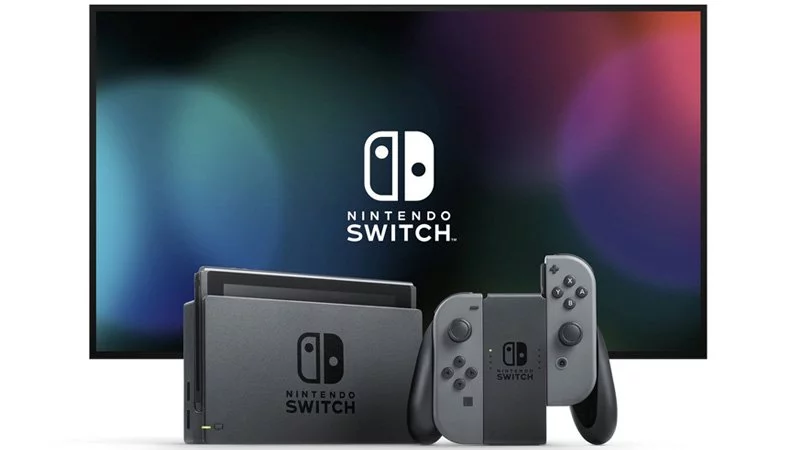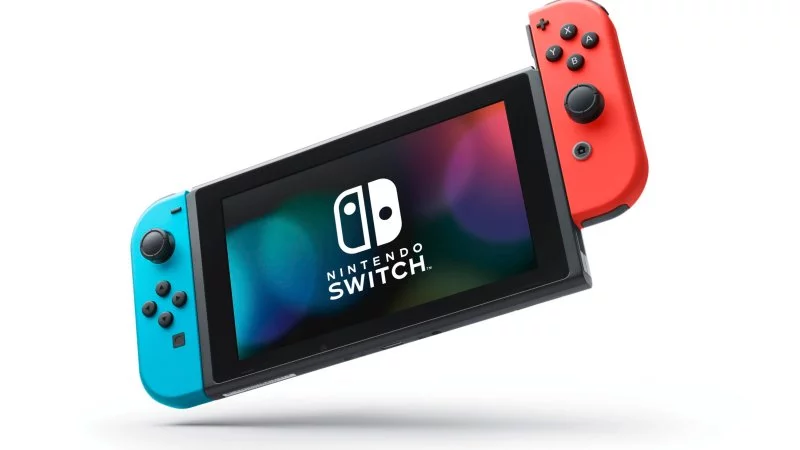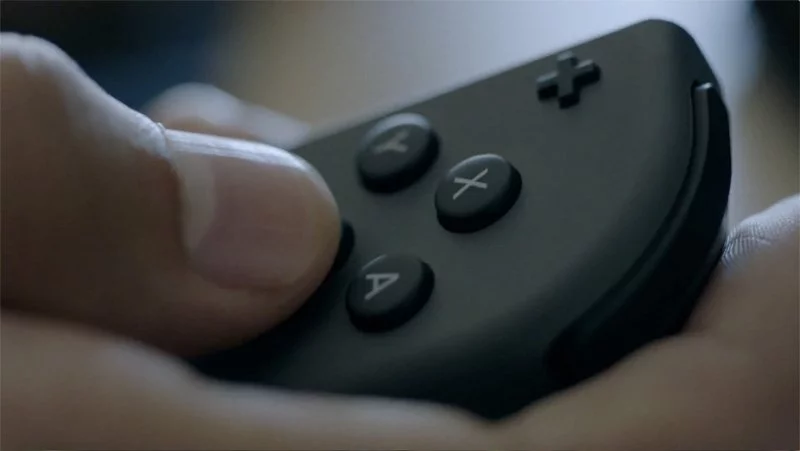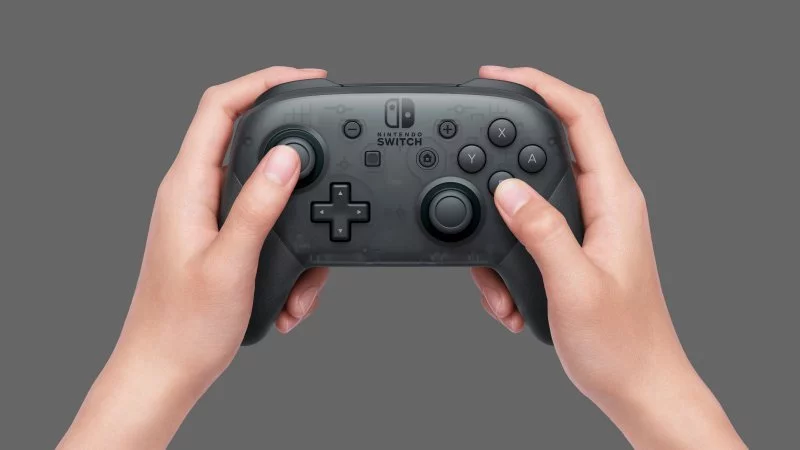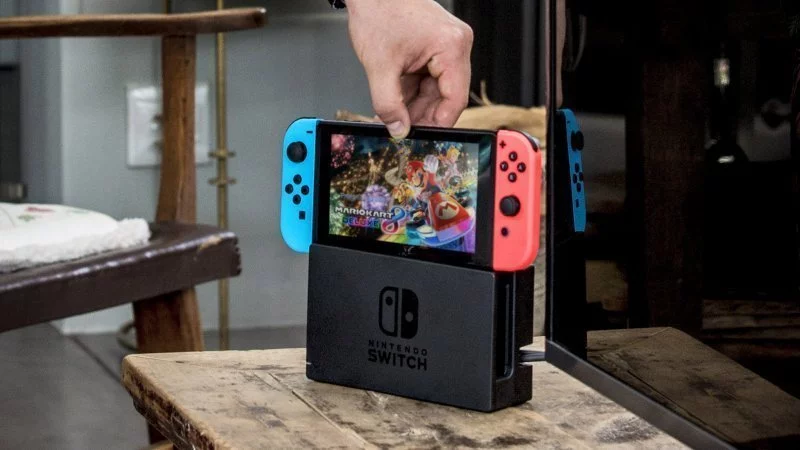Sleek, powerful, innovative, yet familiar – what you see is what you get with Nintendo Switch. After a week with Nintendo’s new console, I’m on-board with the idea of a single device replacing both my Wii U and, although it’s not quite ready for retirement, 3DS. Nintendo has forgone bells and whistles to focus on what it does best: games, portability and nothing else. The myriad of questions that lingered in the lead-up to launch haven’t been answered, and probably won’t be for some time — but that’s what you sign up for with a pre-order. Playing Breath of the Wild on Wii U and waiting for Switch to prove itself is a perfectly valid option, and the safe bet, but one thing is certain: with Switch, Nintendo has delivered an astonishing handheld that finally offers genuine console quality gaming.
The design
From the moment you open the box, Switch carries itself with a pleasing weightiness that speaks of its quality. It’s elegantly slim, yet tactile as it nestles into your grip and avoids feeling like a mangled controller jammed onto the sides of an iPad Mini. I played a majority of the Wii U’s exclusive catalogue off-TV on the GamePad, but the relic from 2012 becomes tacky and cheap positioned snuggly against the thinner, classier Switch. There’s a strong argument to be made Wii U was the misguided stepping stone Nintendo had to take to fully realise the concept’s potential, but Switch deserves all the elation. Unlike Wii U, it knows what it’s trying to be, mostly, and that begins as a premium piece of hardware.
The $470 AUD price tag is only $40 more than the most expensive model of Wii U, and while that called itself the premium package, it was not a premium product. Switch embodies quintessential Nintendo design and teams it with a sleek modern quality more often associated with Apple products. Whereas the bulky Wii U GamePad was designed for function over form, Switch doesn’t feel compelled to make such a concession; it’s more utilitarian and a gorgeous piece of tech. Most Nintendo products feel durable, bordering on indestructible, but as if they’ve emerged from a Fisher-Price catalogue. Switch is the first Nintendo hardware since I’ve been a 20-something consumer that feels like it’s been designed for me as an adult.
I don’t mean to imply Switch isn’t family friendly, but a pristine form factor running a vibrant high-definition display comes at the expense of durability. The Game Boy range, Wii U GamePad and, to an extent, 3DS were designed to survive negligent owners; Switch needs to be handled with care. Whereas the 3DS could be lackadaisically turfed into a backpack, Switch demands the security of a case, and it can be dropped with as much confidence as an iPhone or Samsung Galaxy – it could be fine, but the moment of panic is warranted.
The user interface is clearly a work in-progress, but I like its simplicity. A single row of icons, similar to the PS4, is more user-friendly than the entire page of tiles on Wii U; still, they’re entirely devoid of content at the moment. Beneath lie buttons for the eShop, screenshot album, controller options and general console settings, where the background can be set to a choice of black or white — that’s basically all you can tweak. There’s nothing to do outside of play a game, with no multimedia apps or even an Internet browser, but they aren’t really required. As a trade off, Switch is lightning fast; much, much faster than the convoluted menus of Xbox One and PS4. It jumps from a game to the home screen instantly, and wakes up from sleep mode and gets back into a suspended game as fast as my iPhone displays the lock screen.
The screenshot feature, controlled by a dedicated button on the left Joy-Con or Pro Controller, blows the competition out of the water. Taking a screen and the accompanying notification is instant, compared to a slight delay on PS4 and the horrible mess Xbox has attempted to implement. While digital games can only be installed on one console (Nintendo had to do something archaic), Switch supports up to eight users accounts, compared to the 3DS and Vita’s one, and digital purchases are now linked to those accounts and not the hardware. They’re pretty easy to set-up, too. The Mii Maker has been tucked away into the settings menu and relegated to an optional extra, allowing character images to replace them as profile pictures. It’s fast, simple and much less of a distraction. Miis are still there, if you really want them, but it’s liberating to have the mandatory requirement lifted.
Console games on a handheld
A home console less powerful and more expensive than its competitors, with a muddled online service, no multimedia apps and shaky third party support is a hard sell for $470 AUD. In that light, Switch seems a reckless impulse purchase.
However, as the most powerful handheld ever made — finally delivering upon the illusive promise of console quality meets handheld portability — Switch suddenly appears a whole lot more reasonable. I don’t need a handheld that can play Netflix, nor would I expect it to rival the power of the bulky Xbox One. It’s not a hybrid console in the technical sense of the word – the dock doesn’t add any additional power – but it doesn’t have to be. It’s an astonishingly powerful gaming handheld that’s finally worthy of outputting to, and being played on, a HDTV. Game Boy, GBA, PSP and Vita have all dabbled with being played on a big screen, but all offered inferior experiences – it was an afterthought for products designed around tiny screens. Switch is first and foremost a handheld system, but it was designed as a handheld that can be played like a console – and that’s why Nintendo gets away with calling it just that… even though it’s really more of a handheld.
From a technical standpoint, Nintendo didn’t embellish in any of its fact sheets. A full charge gave us 3 hours (and 6 minutes) while playing Zelda in handheld mode, and it took almost exactly the same amount of time to charge whilst in sleep mode. It’s no Nokia 3310, but that’s not half bad for a HD handheld that’s astonishingly thin; it’s competitive against the battery life of the SD PS Vita and 240p 3DS. The problem is going to be charging away from the dock. Any USB-C cable will do the trick, but unless you’re willing to put it in sleep mode and let it charge for several hours, you’ll need a pretty hefty power bank to charge and play. In our tests, Switch charges well connected to an iPad wall charger whilst in sleep mode, at a similar speed to Nintendo’s included AC adapter. However, it cannot charge the Switch and power it at the same time.
The vibrant 720p 6.2” screen strikes the perfect blend between functionality, performance and concessions. Running at similar specs to the docked performance, there’s no way Switch would manage three hours playing Breath of the Wild; however, its downgrades are barely noticeable. Whilst 720p is at the lowest end of the spectrum in 2017 — and with the dedicated home consoles now targeting 4K — it looks stunning on such a small, yet adequate screen. As a handheld, the screen doesn’t need to be any bigger – there’s only so much space in the average backpack, or smuggled behind some files on an office desk. Even side-by-side it’s hard to accept Switch shares the same size screen with the Wii U GamePad, as it’s so much clearer and brighter, aided by the transition to a more modern multi-touch screen that’s sent stylus manufacturers to the unemployment office. It goes to show size isn’t everything.
Pros of the (Joy-)Cons
The Joy-Cons are a delight – but we haven’t been able to test them properly, as Nintendo didn’t provide Stevivor with 1-2-Switch, the flagship demo of what is essentially the next evolution of the Wii Remote. Motion sensing aside, the Joy-Cons are functionally more capable than their tiny size suggests. They’re surprisingly comfortably connected to the Switch, despite offering little by the way of a conventional grip – I played for three hours without putting the system down and found it much more comfortable than using a New 3DS or Vita for the same duration.
The analog sticks are good, though a little too small, but certainly a massive step-up from the 3DS CirclePad. The Joy-Con face buttons are the same size as those on 3DS, and while undersized, they’re familiar. Switch’s most popular party trick, splitting the Joy-Cons between two players, hasn’t been fully tested yet. However, we previewed Mario Kart 8 with half a controller each, and it’s fine for players two, three and four – as host, you’ve earned the Pro Controller. Despite their diminutive stature, Joy-Cons are well suited to being played in a SNES configuration, especially with the included bumper strap that increases the height just enough, and adds proper (S)L and (S)R buttons, to make it more comfortable. It won’t work for everything, but you’re set for two-player split-screen Mario Kart right out of the box.
The only oversight in the design of the Joy-Con is its triggers. They are total rubbish. The ZL and ZR buttons are the only components of Switch that protrude from the flat rear surface, but they’re disappointing digital buttons, without any give. The corresponding buttons on the superb Pro Controller are much better – they feel similar to the triggers on a DualShock 4, and actually depress when engaged. However, while they have some of the form of analogue triggers, they are still digital buttons – the wrong choice.
Aside from that, the Pro Controller is fantastic. In fact, write it in your diary: Switch costs $570 AUD. Unless you don’t own a TV and will never use the dock, the Pro Controller is an essential purchase. Triggers aside, it’s better than the DualShock 4, and improves upon the original Xbox One Controller on which it is based – it’s only trailing the industry leading Xbox One Elite Controller, and that’s double the price. I mention the Elite because the Switch Pro Controller has a very similar weight to it — and that’s largely why it feels so good to use. Between the two of them, Sony’s going to have to respond.
The buttons and control sticks on the Pro Controller are much larger; effectively identical to those on the Xbox layout. It also features a proper Nintendo-grade D-Pad, which is a notable absentee in the default setup. The improved rumble feels fantastic in the single game we’ve been able to thoroughly test, and it too features motion controls, which we’ll hopefully never have to use — if you’re going to use motion, use the Joy-Cons. While both Joy-Cons set in the included Joy-Con grip to cobble together something reminiscent of a normal controller is more comfortable than it ought to be, that botch job should be delegated to player two. If you’re playing Switch in TV mode, you need a Pro Controller.
On playing using the grip, which doesn’t charge the Joy-Cons out of the box, there have been reports of the left Joy-Con having lag issues. That sounds problematic, but Stevivor hasn’t encountered any issues, mainly because the Pro Controller is so good; I’ve tried playing in the Joy-Con grip for a few hours, but I can’t bring myself to use it when the far superior Pro Controller is available in TV mode. In handheld mode, with the Joy-Cons attached, there doesn’t appear to be any sync problems. The only problem we have with Joy-Cons in the grip — aside from having to spend $40 to make them charge, the right control stick feels a bit too low and confuses my muscle memory.
**Click**
Oh, the click plays. Switch emits its signature clicking sound upon a full system restart, which you’ll rarely experience, and whenever a Joy-Con is connected, alongside visual confirmation. Adding and removing the Joy-Cons is simple, yet sturdy. There’s no wiggle room when they’re locked into place, it feels like a single connected unit, but they don’t put up a fight when the mechanism has been released – the only thing I’ve had a bit of trouble with is getting the wrist strap bumpers to slide off cleanly.
Adding and removing Joy-Cons is easy, but docking between handheld and TV mode is seamless; I’m deeply impressed every single time at how fast and simple the process is. It slides into the dock and glides itself into place – even if you’re way off, it’s easy to manoeuvre it into the USB-C connection. Once contact has been made, you’re up and running on TV within a second. There’s no delay, and no painful change over. It just happens. Likewise, taking the Switch out of the dock almost instantly enables the handheld screen. The only difficulty is pressing the fiddly little power button when the Switch is inside the dock, but the home button on a controller can be used to awaken a sleeping Switch.
Switch is noticeably hotter when it’s been running in TV mode, where it taps into its full potential to hit up to 1080p (Zelda is only 900p) and engages the heat vent located at the top of the unit. I found it to remain fairly cool when running in handheld mode for our battery test, but switching between docked and undocked, it was definitely much warmer, and I could feel the hot air being ejected after it had been running on TV.
A clouded future
It would be naive to pretend PS4 and Xbox One had it all worked out back in 2013. They both launched missing what are now considered key features, and will probably look very different in another four years; Switch certainly isn’t alone in launching surrounded by question marks. However, whereas Microsoft and to a lesser extent Sony have based their developments on user feedback, it remains to be seen if Nintendo will listen to its audience to shape the future of Switch. Traditionally, that’s not how Nintendo has operated.
Launching a paid online service brings Nintendo into line with the competition, but it’s concerning how little information is known. Prior to launch, we can’t test the eShop or link our newly created Nintendo Account, let alone play an online game – and we don’t even have one to test yet. The subscription service is launching as a “free” trial, not to thank early adopters, but because it isn’t ready. With Mario Kart 8 and Splatoon 2 the first major online games out of the gate, how is Switch going to offer a better online experience than Wii U, where versions of those can still be played for free? As it stands, you can’t buy Switch to play online games because we don’t know enough about how it’s going to work, and that’s a concern.
Neither Wii U or 3DS launched with a Virtual Console, but they did offer some information prior to launch; by this stage, we knew Wii purchases could be transferred to Wii U, once released, for a small fee. We have no idea if that will be possible on Switch. Of more concern is the quality of Virtual Console. It was a highly regarded feature, dare I say even a system-seller on Wii, but became a shadow of its former-self on Wii U, where third parties gave up when it became apparent Nintendo didn’t care. Switch is a new beginning, but that doesn’t mean a fresh start. Nintendo fans will only put up with buying the same retro games so many times, but they will at least do that. However, we can’t go through another four years of trickling re-releases. For Virtual Console to be a success, it needs to be well populated immediately, and we really should have heard about it by now.
Internal storage is woeful on Switch, but like Xbox One and recently PS4, there is scope for Nintendo to address the oversight through a firmware update than enables external USB support on the dock, which has a USB 3.0 port. Physical games don’t have to be installed, but 25.9GB of internal storage space is insulting in 2017 – and of course I want all my games installed on my HD handheld, it would make things so much easier. Upgrading through the MicroSD slot helps – on-sale, 128GB for around $55 AUD is the sweet spot – and I’m not saying there should have been incremental 64GB and 128GB options like the latest iPhone; it’s better to allow users to expand the portable memory. But there needs to be a USB HDD option. Games are getting bigger and bigger, DLC and patches will take up some of that space, and in five years time I don’t want a majority of my digital games deleted to make space for new ones, or to be faffing about with several MicroSD cards. This is a problem for the future, not quite yet, but one with an obvious solution; but does that mean it’s too obvious for Nintendo to implement?
Nintendo Switch: To Launch or not to launch?
Switch at launch is actually a pretty simple proposition: do you want to invest in what’s likely to be the future of handheld gaming and play The Legend of Zelda: Breath of the Wild as soon as possible? If the answer to both of those questions is yes, it’s an easy decision. We’ll have our full review of Zelda tonight — launch games don’t get much better than this — and with the delightful Snipperclips joining the party, the opening weekend is now looking much brighter. If you were hoping for a more concrete roadmap and for Nintendo to compete directly in the home console space, Switch isn’t for you; at least not yet. As someone with an irrational hate for standard definition, I’m elated Nintendo has finally launched a HD handheld. Its future mightn’t be clear, but I’m excited to be along for the ride.
Nintendo Switch was reviewed using a Switch console, Pro Controller and copy of The Legend of Zelda: Breath of the Wild provided by Nintendo. At the time of publishing, we weren’t able to test online functionality, including the eShop or Nintendo Accounts, as it’s included in a day one patch. Without any other games, we weren’t able to fully test the features of the Joy-Cons, such as motion control, the IR sensor, HD rumble or horizontal play, outside of what we’ve played in earlier previews.
This article may contain affiliate links, meaning we could earn a small commission if you click-through and make a purchase. Stevivor is an independent outlet and our journalism is in no way influenced by any advertiser or commercial initiative.


